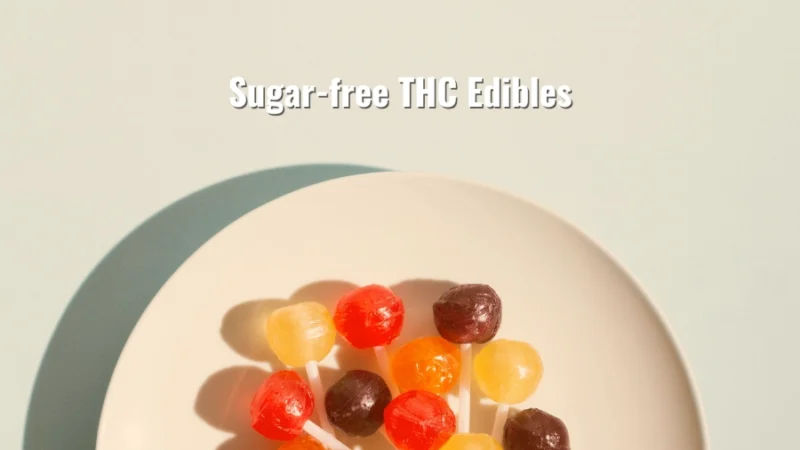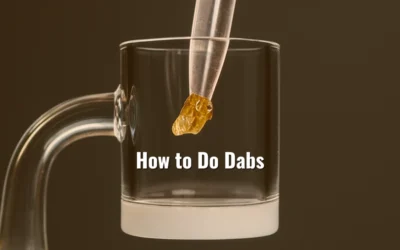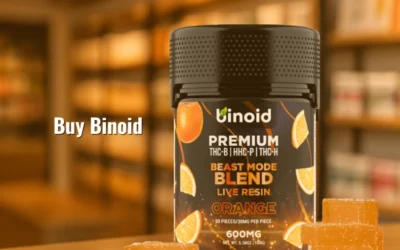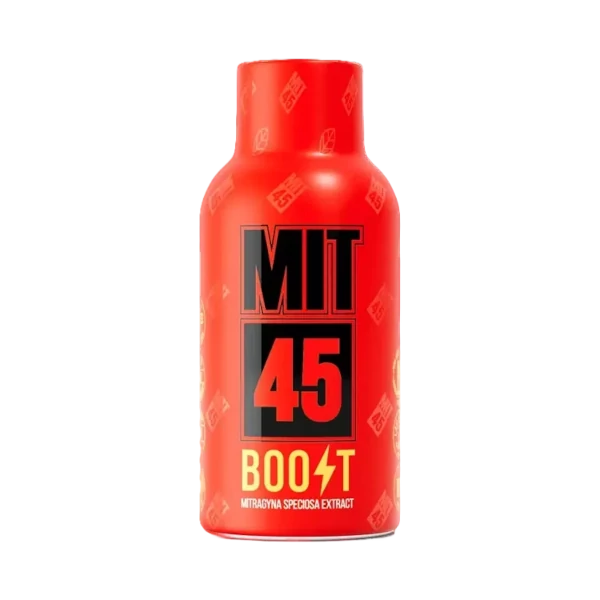Hopefully, when you read the title of this blog, you didn’t picture us trying to sneak into your kitchen and swap your snacks for kale chips. We’re not here to change your diet, and this isn’t the “new year, new you” version of our shop.
In this post, we want to focus on how your body feels during and after an edible. Think about it. A lot of people love THC gummies or chocolates, but not everyone loves the sugar buzz that tags along. The quick lift, the sudden crash, that heavy slump that makes you wonder if it was the cannabis or the candy doing the work.
Sugar-free THC edibles cut that extra noise. With no spike or crash, you will just experience the effect of the cannabinoids themselves. For some, that means clearer sessions. For others, it’s a steadier ride that doesn’t end in brain fog or mid-afternoon yawns.
That’s why we’re talking about sugar-free today. Not as a diet move, but as a way to keep the cannabis experience cleaner, smoother, and closer to what you came for.
Blog Summary:
Sugar-free THC edibles sound simple enough: same THC, no sugar. But the story goes deeper. In this post, we’ll break down:
Why sugar does more than sweeten an edible — and how it shapes your high in the background.
- What happens when cannabinoids aren’t competing with a sugar rush (or crash).
- How different sweeteners change the way edibles hit and how long they last.
- Which types of users stand to gain the most from going sugar-free.
- The not-so-secret truth about flavor.
- How to test sugar-free edibles side by side.
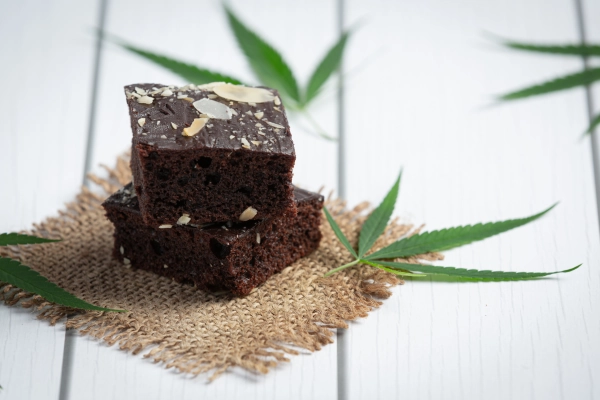
Table of Contents:
- Sugar in Traditional Edibles
- How Sugar-free Edibles Interact with the Body
- Sweeteners and Their Impact on Onset
- Timing Matters
- Who Benefits Most from Sugar-Free THC Edibles
- Taste: The Biggest Question Mark
- Try Sugar-Free THC Edibles for Yourself
Sugar in Traditional Edibles
Most cannabis edibles are built on sugar, and not necessarily because people have a sweet tooth. Sugar is a workhorse in edible design: it masks the grassy, bitter taste of hemp extracts, helps bind cannabinoids evenly into gummies or baked goods, and extends shelf life so products don’t turn stale after a week.
That makes sense from a production standpoint, but it doesn’t always make sense for your body. Sugar carries its own set of effects that ride alongside the THC or CBD. A candy bar with 20mg of Delta 9 THC is hitting your bloodstream with a wave of glucose, on top of delivering cannabinoids.
For some users, that’s no big deal. For others, especially those sensitive to sugar spikes, it can complicate the whole experience. A sudden rush of energy followed by a predictable crash may leave you feeling foggy, sleepy, or even anxious. And these sensations can overlap uncomfortably with the natural curve of an edible.
In fact, studies show sugar doesn’t perk you up: it might slow you down. A 2019 meta‑analysis found that carbohydrates didn’t improve mood in the hour after eating. Instead, they were linked to more fatigue and less alertness compared to the placebo. Right when your edible should be hitting its stride.
How Sugar-free Edibles Interact with the Body
Let’s clear one thing up: THC doesn’t care about sugar. Cannabinoids are fat-soluble, which means they hitch a ride on oils and emulsifiers, not glucose, to make their way into your system. So, if you switch from regular gummies to sugar-free THC gummies, the potency of the THC isn’t changing.
What does change is how your body handles the rest of the edible. Sugar-free formulations skip the big glucose spike that comes with traditional candies. That means steadier blood sugar levels, fewer roller-coaster crashes, and less metabolic “noise” layered on top of the cannabis effects.
That translates into a cleaner, more predictable session where your edible does what it’s supposed to do, without the side order of sugar rush and fatigue. There is also space for those who are mindful about carbs or who metabolize sugar quickly. There, the difference can feel dramatic, like the cannabis is finally standing on its own instead of competing with a candy bar.
In the digestive side of the experience, sugar alcohols and natural sweeteners are absorbed differently than table sugar. Some pass through the gut more slowly, which can subtly stretch out the experience. Others have virtually no effect on blood sugar at all, keeping the ride smoother from start to finish.
Sweeteners and Their Impact on Onset
While sugar itself doesn’t boost or block cannabinoids, the type of sweetener in your sugar-free THC edible can influence how fast (or slow) the effects show up. Not because the THC changes, but because your digestive system does. For example:
- Sugar alcohols (like xylitol, erythritol, and sorbitol) are only partly absorbed in the small intestine. Meaning, they move slower through your system. In edibles, that can sometimes delay the onset a bit, but also make the effects feel steadier. Some people also notice mild digestive effects if they take too much. Nothing dangerous, but worth knowing.
- Natural plant-based sweeteners (stevia, monk fruit) don’t add calories, don’t spike blood sugar, and don’t really change digestion speed. For most users, that means the onset of a stevia or monk-fruit-sweetened gummy feels very similar to a regular gummy. Minus the sugar crash.
- Artificial sweeteners (sucralose, aspartame) are fully non-nutritive, so they pass through the body without raising blood sugar. They won’t slow down cannabinoid absorption, but depending on the formulation, they can sometimes leave a sharper aftertaste, which could affect the experience in a different way.
For most people, the difference in onset won’t be night and day, but it can explain why one sugar-free edible feels like it kicks in smoothly while another takes its time. It’s less about the THC itself and more about how your body processes the carrier ingredients around it.
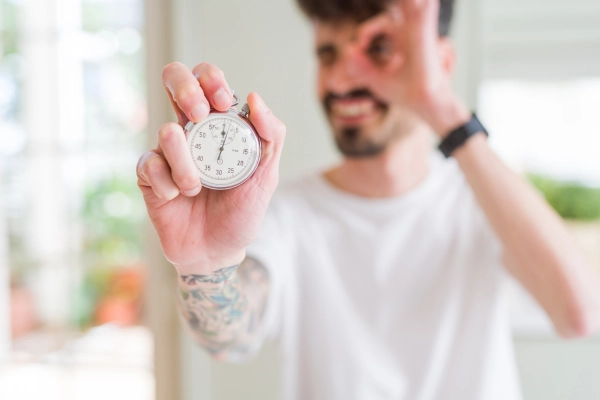
Timing Matters
One reason sugar-free THC edibles feel different is in how long the experience lasts. When you eat a sugar-heavy gummy, your blood sugar spikes quickly, then dips just as fast. That dip often overlaps with the THC peak, resulting in an edible that feels like it’s tapering off sooner than it should, leaving you groggy or flat right when you expected to still be lifted.
With steadier blood sugar, the cannabis effects of sugar-free cannabis gummies can unfold at their own pace. That often translates into a ride that feels smoother and, for some users, even longer. It’s not that the THC is stronger; it’s that there’s no sugar dip cutting the session short.
For anyone who uses edibles during the day or for focus, this shift can make a big difference. Instead of peaking and crashing, the experience levels out. And that will give you more usable hours before you need to think about re-dosing.
Who Benefits Most from Sugar-Free THC Edibles
In practice, sugar-free THC drinks and other edibles click with a wide range of customers:
- Daily users: If edibles are already part of your routine, switching to sugar-free means you’re not stacking up dozens of grams of added sugar each week. The THC still hits, but your diet doesn’t take the collateral damage.
- Low-carb or diabetic customers: For anyone watching blood sugar closely, sugar-free Delta 9 gummies are an obvious fit. They provide the same effects without forcing you to trade off between managing health and enjoying cannabis.
- Health-conscious users: Even if you’re not strictly low-carb, plenty of people prefer to keep their sessions “clean.” Sugar-free THC edibles make it easier to align cannabis use with an overall wellness lifestyle.
- People who hate feeling sluggish after sweets: Not everyone likes the way candy makes them feel, with or without THC. For these customers, sugar-free formats cut out that groggy after-effect and keep the focus on the cannabis.
Taste: The Biggest Question Mark
We don’t want you to think that we are hiding the biggest hurdle for sugar-free THC edibles: flavor. Taking sugar away from edibles, the taste challenge becomes obvious: How do you make a cannabis gummy taste like something people want to eat?
Early attempts didn’t always nail it. Some sugar-free gummies had a sharp aftertaste, a chalky texture, or that unmistakable “diet candy” vibe. But newer formulations are much better. Brands have figured out how to blend stevia, monk fruit, or sugar alcohols with natural fruit flavors in ways that taste surprisingly close to their sugary counterparts.
That said, not every product hits the same. Drinks tend to disguise sweeteners more easily than sugar-free Delta 8 gummies. Chocolates are trickier, because the balance between cocoa and alternative sweeteners has to be exact. But when gummies are done right, they’re nearly indistinguishable from the originals. When they’re not, you’ll know after the first bite.
The good news is that today’s sugar-free THC gummies, drinks, and chocolates are no longer just “good for sugar-free.” They’re good, period. It’s worth taste-testing a couple of brands to see which ones have cracked the code and which ones still taste like a compromise.
Try Sugar-Free THC Edibles for Yourself
So, are sugar-free THC edibles just another diet label, or do they change the cannabis experience? Unfortunately, it’s not a yes or no answer. It depends on who you are and what you want.
For some, sugar-free THC gummies or drinks are simply a checkbox. For others, they feel like a genuine upgrade. Either way, sugar-free THC edibles prove that cannabis doesn’t have to come wrapped in a candy coating to be effective or enjoyable. They widen the menu, giving you another way to dial in your experience. And for a lot of us, that’s the whole point.
The easiest way to know if sugar-free makes a difference for you is to test it. Start small. If your favorite gummy has a sugar-free version, try the same dose and pay attention to how you feel during and after.
If you’re new to edibles altogether, sugar-free THC gummies and drinks are a smart entry point. They’re easier on your system, simple to dose, and less likely to leave you with that “I overdid it” feeling that can come from mixing cannabinoids with a heavy sugar load.
And if taste is your concern, don’t stop at the first try. Different brands approach sweeteners in different ways, and some are closer to the original flavor than others. It’s worth sampling a couple until you find the one that clicks.
We keep a rotating lineup of edibles on our shelves for exactly this reason: so you can test, compare, and figure out if sugar-free THC edibles are a checkbox for you or the upgrade you didn’t know you needed.
